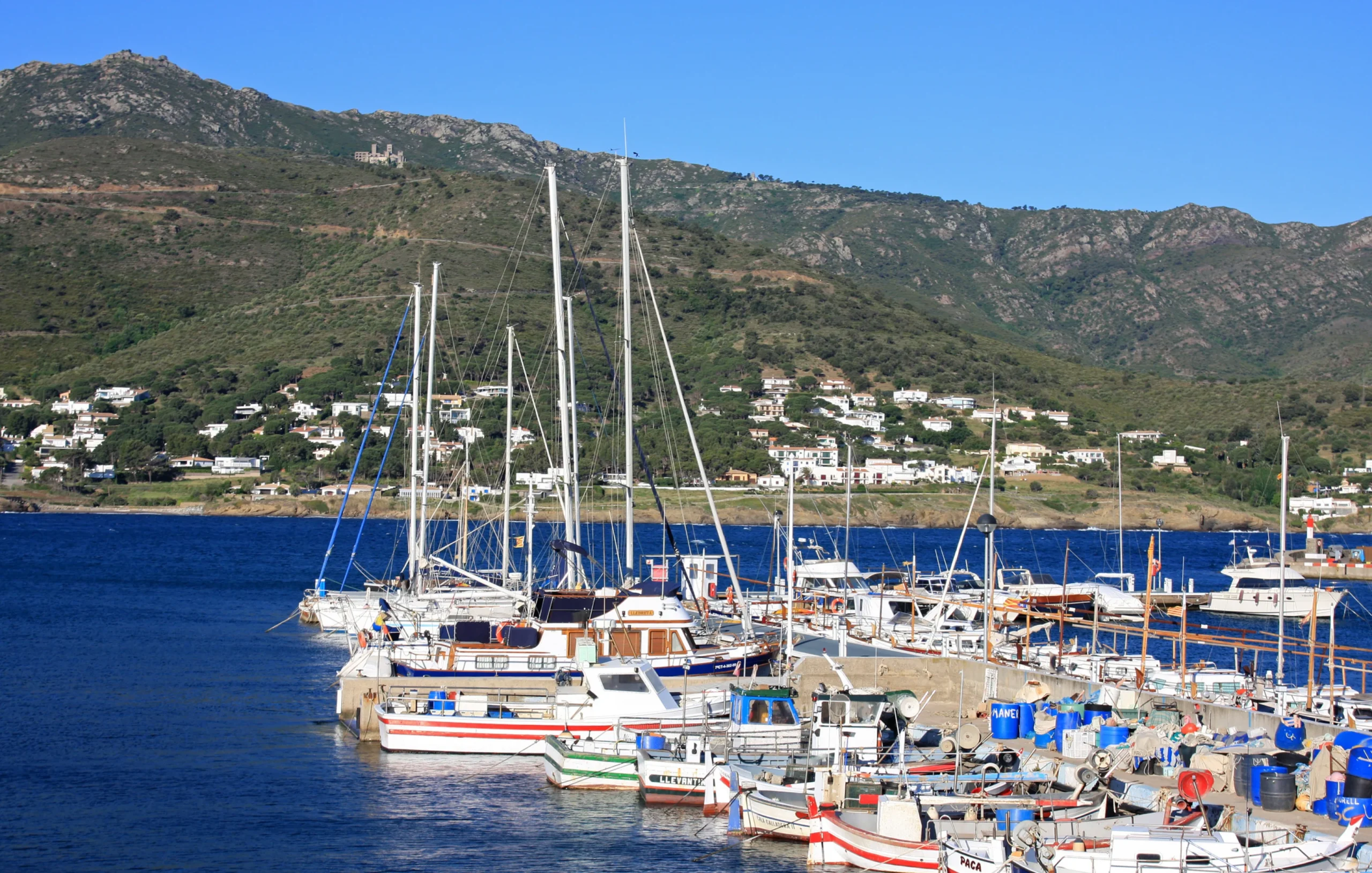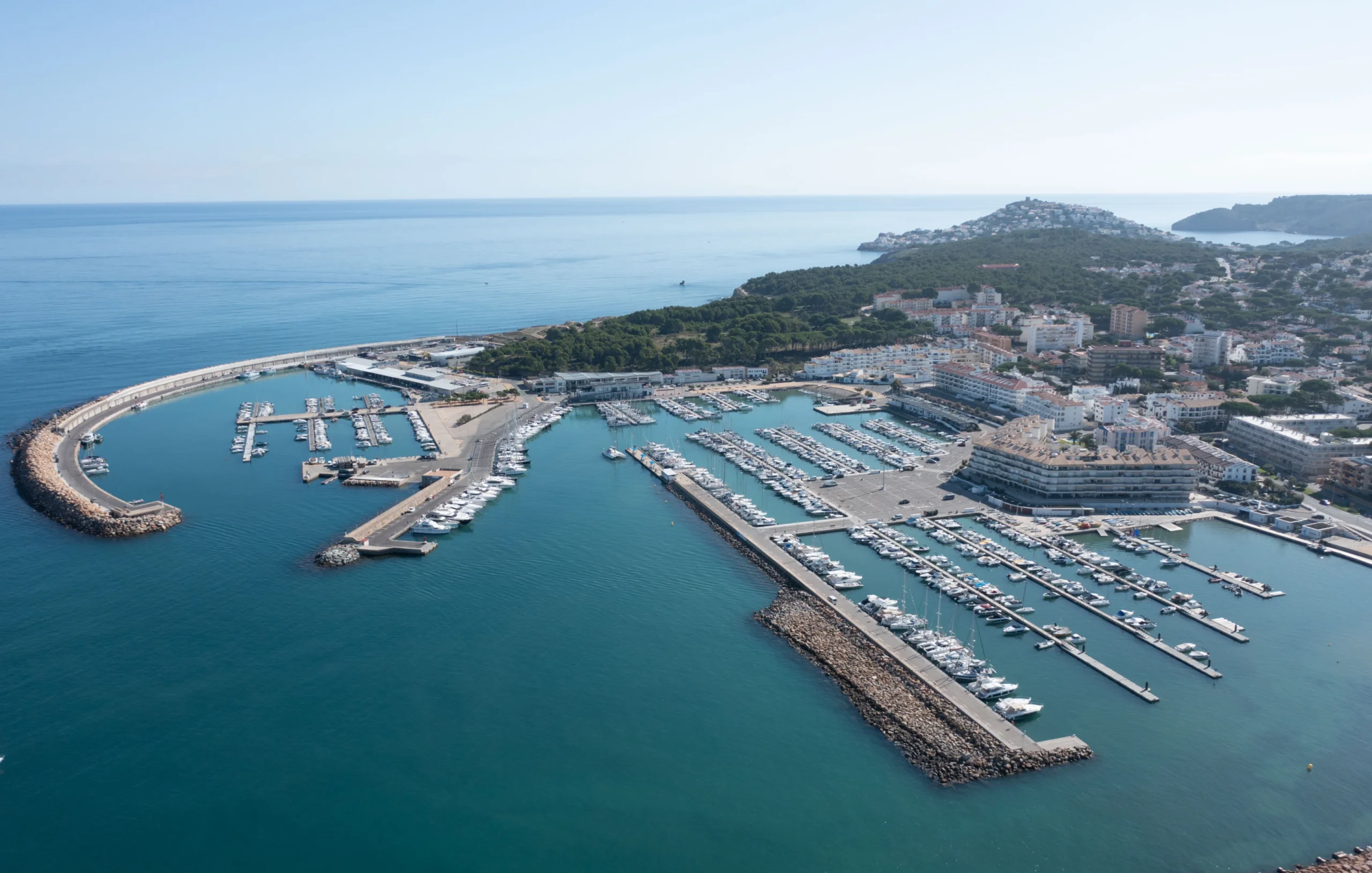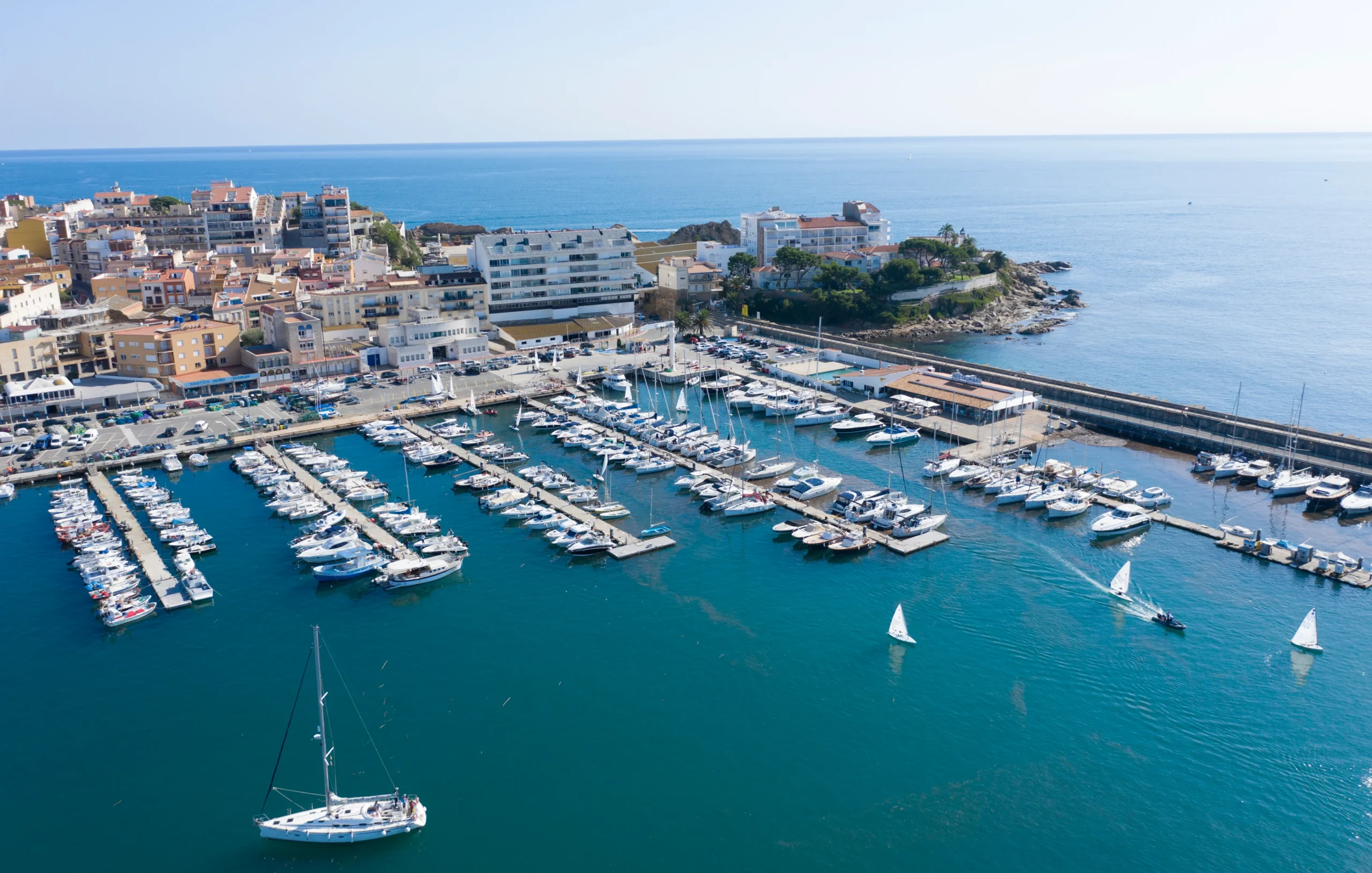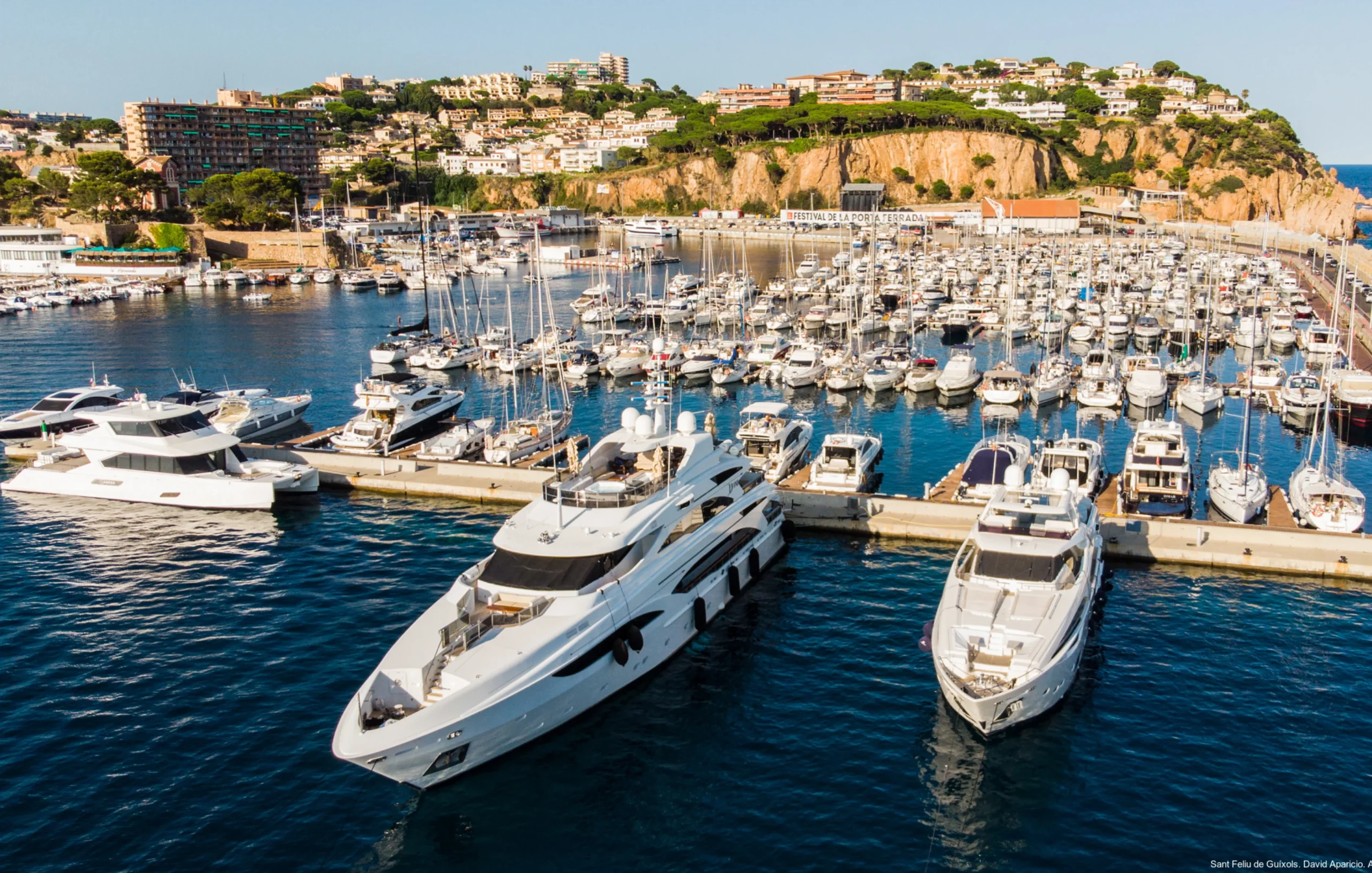

Blog


Tekie communicator and yogi. A social being, life enthusiastic with a taste for the finer things.
The marinas and tourist ports of the Costa Brava are the ideal starting point to discover cliffs, caves, hidden coves and a unique biodiversity that, combined with the cultural, gastronomic and wine-centered richness of the area, allow you to enjoy the sailing experience twice as much.
The Costa Brava, with its 220 kilometre coastline – from cape Falcó, in Portbou, to the rock of Sa Palomera, in Blanes – offers a varied and majestic view with a landscape drawn by the tramuntana and the garbí, characteristic winds of the area, which not only favour sailing and the practice of activities and watersports, but they also provide a very unique character and flavour to the wines of the internationally recognised DO Empordà. To enjoy the essence of the wind, the waves and the fauna and flora of its spectacular and deep seabed, the 18 marinas on the Costa Brava are the best starting point.

El Port de la Selva. Santi Bosch. Arxiu Imatges PTCBG
The wild north
The Portbou port, located right on the border with France, has a maximum draft of eight metres and allows boats of up to twenty metres in length. The port, protected from the north wind, has a calm and family-centred atmosphere and is close to all the services you will need. Similarly, the yacht club Sant Miquel de Colera, with capacity for smaller boats (up to fifteen metres), is located near the centre of the town for everything you need.
On the other hand, the historic marina of Llançà, managed by Club Nàutic Llançà, has modern facilities and a wide range of nautical activities. Integrated into the heart of the municipality, the rail connection with Figueres and the Dalinian triangle makes it an important point of cultural interest. Likewise, the Club Nàutic Port de la Selva, located in this picturesque town with a seafaring tradition, boasts excellent facilities and offers a wide range of aquatic, cultural and gastronomic activities which are highly attractive to tourists.

Club Nàutic l'Escala. Manel Arpa, Aerial Films. Arxiu d'Imatges PTCBG
The Port of Roses, one of the main fishing ports in Catalonia and with a modern marina which takes boats up to 45 metres in length and six in draft, provides shelter from the wind and a rich catalogue of nautical and leisure services, with coves and beaches such as Montjoi or Joncols that allow safe and convenient mooring in their buoy fields. Nearby, the Marina Empuriabrava, within the bay of Roses and with 23 km of navigable canals, is an outstanding tourist centre, perfect for exploring the neighbouring coves of Cadaqués or, further south, the marine reserve of the Illes Medes, a world reference in diving.
Finally, the Sant Pere Pescador Nautical Club, located in the surroundings of Aiguamolls de l’Empordà Natural Park, ideal starting point for kayak outings on the river; and the Club Nàutic l’Escala, with privileged access to Montgrí Natural Park and to the ruins of Empúries. The two ports, with a wide range of nautical activities, represent not only points of refuge from the wind, but also open doors to the rich history, culture and biodiversity of the Costa Brava.

Aiguablava. Arxiu Imatges PTCBG
The small coves in the centre
Sailing south, the Club Nàutic Estartit, located right in front of the majestic Illes Medes, offers 650 moorings and a wide variety of nautical activities: sailing, snorkelling, motorboating, kayaking, diving, paddle-surfing, etc. This port is an ideal refuge for navigation all year round thanks to its renovated facilities and quality services. An underwater paradise and one of the best nature reserves in the Mediterranean.
From L’Estartit it is very easy to get to charming fishing villages, such as Begur, Llafranc or Tamariu, to mention just a few. And even for travelling to medieval towns which are further inland, but very close.
On the other hand, you have the Club Nàutic Aiguablava and the Club Nàutic Llafranc. They are smaller, more picturesque ports, intended for shallower draft vessels. Aiguablava, with a maximum depth of 1.5 metres, and with access guarded by rocky outcrops, offers an ideal environment for underwater activities and dinghy sailing. The Club Nàutic Llafranc, located under the cape of Sant Sebastià lighthouse, enjoys protection from the tramuntana wind and provides a quiet environment within a family-friendly cove, ideal for dinghy sailing and diving.

Palamós. Manel Arpa, Aerial Films. Arxiu Imatges PTCBG
It is well worth exploring the route from Llafranc to Palamós, where we will find additional ports and an archipelago formed by four islands and twelve rocks that, due to their shape, give their name to the Formigues Islands, meaning ‘ants’ in English. They are administratively halfway between Palafrugell and Palamós and they are characterised by the set of underwater caves at their bottom and by the presence of numerous marine fauna.
We will then arrive at the Marina Palamós and the Club Nàutic Costa Brava – Sailing Palamós, located in this maritime municipality with a fishing tradition. These ports offer an extensive array of services for vessels of all types, with regattas and activities throughout the year. Mooring in Palamós is quite an experience. Beyond the ports and beaches, there is an extensive cultural wealth, with megalithic monuments and its Iberian site or ancient town, in addition to the richness of its landscape, which you can enjoy along the coastal path or as you travel through the mountains of the Gavarres, with spectacular views of the sea from the top.

Sant Feliu de Guíxols. David Aparicio. Arxiu Imatges PTCBG
The contrasts of the south
In the south of the Costa Brava, from Platja d’Aro to Blanes, between extensive sandy beaches and small hidden coves often accessible only by sea, you will find the Club Nàutic Port d’Aro, which provides shelter from the garbí (a type of wind) and offers a wide range of services, including a complete technical area, sailing school, catering and a nearby leisure space.
On the other hand, in Sant Feliu de Guíxols, next to the fishing area and the fish market, the Nàutic Vell is a welcoming and protected area at the end of the beach where small fishing boats go. In this same town, the Club Nàutic Sant Feliu de Guíxols offers a variety of mooring options, with special facilities for superyachts and a pontoon that can accommodate vessels up to 80 metres in length. The club stands out for its excellent staff and location, with easy access to local attractions such as the fruit and vegetable market, museums and a wide gastronomic offer.

Blanes. Fundació Carl Faust. Arxiu Imatges PTCBG
On the other hand, the small and inviting Club Nàutic Cala Canyelles offers good protection from the garbí and tramuntana winds. With a maximum draft of three metres and maximum length of eight metres, it is surrounded by vegetation and high cliffs and you can enjoy a number of activities in the water, such as SUP paddleboarding, kayaks with an instructor or water skiing, among others.
To finish, the Blanes Sailing Club, which is the starting and ending point of the Costa Brava, is a club that stands out for its respect for the environment, with more than 300 moorings and a maximum draft of eight metres at the channel entrance and six metres further inside, which takes boats of up to 24 meters in length. Its facilities are varied: from a modern fitness & spa to a wide range of nautical-sports activities. Take the opportunity to visit the Marimurtra Botanical Garden, a balcony overlooking the sea full of nature and beauty.
In this sense, it is important to remember that a good conduct at sea, with responsible anchoring, respect for other boats and bathers, as well as correct waste management and conscious use of resources, will allow us to preserve the Costa Brava and its natural beauty.